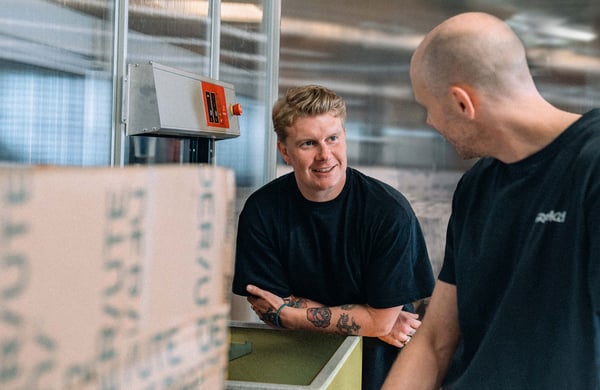Online Vs. In-Store Shopping
Ecommerce is booming. In fact, it’s still growing. Which makes sense—it’s much more convenient to order directly from your device, rather than having to visit a store in person.
Ecommerce offers a larger product selection and lower prices than in-store selections. Customers are especially loyal to brands that meet or exceed on-time delivery promises. Hundreds of millions of pairs are purchased online each year, making shoes one of the most popular retail categories in all of ecommerce.
However, some shoppers still prefer buying in-store, for the perks of customer service and the ability to see, touch, and try on shoes before purchasing.
The Pitfalls of Footwear Fulfillment
Whether buying online or in-store, consumers demand selection, value, speed, control, and quality. This expectation creates an immense challenge for suppliers of the world’s leading brands. To prevent loss of sales to competitors, companies stock an increasing selection in-store, and at nearby locations.
However, as businesses leverage their online stores as in-house liquidation channels, SKUs can start to move more slowly. And shoeboxes take up a lot of space. Plus, they enclose the product, making it harder to keep visual track of inventory. Most shoe-focused businesses have massive amounts of in-stock SKUs at any given time.
To solve for this issue, some retailers have invested in sophisticated point-of-sale software, while others have merged their online and brick-and-mortar capabilities to streamline inventory access. If they have the SKU in stock anywhere in their supply chain, a customer can buy it.
And whether in the local storage room, micro-fulfillment centers, or central distribution centers, retailers are turning increasingly to warehouse automation to optimize the complex fulfillment of footwear.
Why Automation Is The Best Fulfillment Solution For Footwear
Automation unlocks massive improvements in storage capacity and order picking rates.
For example, in a cube-based automated storage and retrieval system (ASRS), the bulky shoeboxes are stored in bins stacked tightly on top of each other—increasing capacity by up to 10 times by condensing inventory within an ultra-high density gridded system.
A modern warehouse execution system (WES) further simplifies the fulfillment process. At the click of a button, a customer’s order can be relayed directly to the ASRS. The WES system orchestrates prioritization in real time, enabling continuous flow for pick, pack, and ship—slashing cycle times down to minutes.
A goods-to-person (G2P) ASRS makes the process even more efficient by bringing ordered items directly to a person or picking station, eliminating half the time typically spent walking to hunt down products. In larger warehouses, workstations are typically connected to conveyors and sorters that further help warehouse workers efficiently complete the fulfillment tasks.
In some cases, robots even work in tandem with a pick-and-place robotic arm to lift the merchandise from the pick location. In total, productivity can be increased tenfold, benefiting store and retail channels with a unified inventory and process.
Cube Storage Automation Is The Perfect Fit For Footwear
Whether you sell 100 or 1 million pairs a day, shoes are a challenging category of merchandise to handle. Especially as shoppers expect more selection and more speed, when shopping online and in-store. To keep up—or better yet, stay ahead—sellers need ample storage capacity and smart technology in place.
Manual picking processes are outdated, labor-intensive, and inefficient ways to manage the demanding volume and pace required to keep up with demand. By investing in automation, you give your operations team the necessary tools to solve space and labor challenges. In return, your business is set up to thrive long term in the highly competitive footwear market.





